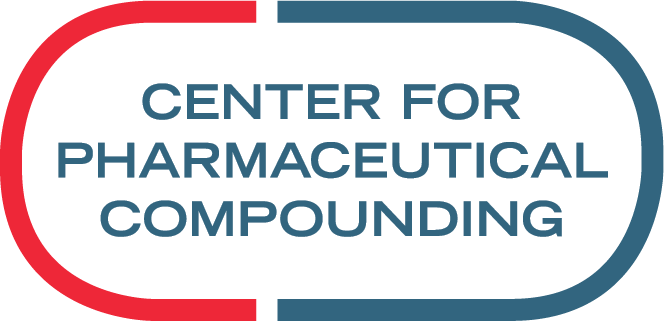center for pharmaceutical compounding
CBD
A cannabinoid is a type of messenger molecule, used to send messages in the body via the Endocannabinoid System. Humans make their own cannabinoids; our liver synthesizes them as necessary. Interestingly, hemp plants make their own cannabinoids too, yet they act differently in our bodies than our own cannabinoids- this elicits new responses that may have wide ranging benefits.
We Carry:
What is CBD?
CBD (cannabidiol) is a plant cannabinoid that is federally legal when sourced from the hemp plant. The hemp plant is a variety of Cannabis sativa. The marijuana plant is a different variety of Cannabis sativa. The hemp plant has high concentrations of CBD and low concentrations of THC (<0.3%), whereas marijuana has high THC and low CBD content. CBD is just one of 113 known cannabinoids in the hemp plant.
How does CBD work?
Anything that has a spinal cord (including animals) has what’s called an Endocannabinoid System. Think of it as a type of master control for the rest of the body- it can affect many different bodily functions. Its main purpose is to promote homeostasis in the body- keeps our internal systems in balance. We make our own internal cannabinoids- our liver synthesizes them as needed. People who make more of these cannabinoids have been found to be happier. There is no easy way to determine if someone is deficient or not. When needed, we can supplement with plant cannabinoids like CBD.
There are three different “types” of CBD products: full spectrum, broad spectrum and isolate.
- Full spectrum products contain all of the plant cannabinoids, omega 3 and 6 fatty acids, terpenes and alkaloids.
- Broad spectrum products contain everything in the Full spectrum product EXCEPT THC. These products are great for patients who cannot consume CBD products that contain even a tiny amount of THC.
- Isolate products contain only the single cannabinoid, CBD (cannabidiol), and do not contain any other cannabinoids or plant products (unless otherwise specified on the label and verified by the Certificate of Analysis).
Full and broad spectrum CBD products are dosed differently than isolated CBD products.
Full spectrum products are considered to be generally better tolerated with lower doses typically needed and may be less expensive than isolated products. Full spectrum products naturally contain <0.3% THC, which is not enough to produce a body or head buzz. Response may vary from patient to patient and one type may work better for some.
Will CBD help with my pain?
The short answer is maybe. CBD is thought to have pain relieving, anti-anxiety and anti-spasmodic properties and depending on your type of pain, it may be extremely beneficial. We have no peer reviewed human clinical trials yet that have studied cannabidiol effects in pain.
How much do I take for pain?
Dosing is not based on condition and not based on weight. Dosing is based on effect and unique to each individual. It’s up to you to determine your optimal dose through a bit of experimentation. As Americans, we tend to think more of something is better. That is not necessarily the case with CBD products. Dosing should be started low and increased slowly if needed. A good starting dose is 10mg of active cannabinoids. Every 4-7 days, increase your dose by 5mg. Re-evaluate your symptoms and determine if another increase is appropriate. Repeat until you achieve the effect you want. It’s important not to go too high too fast- it could cause diarrhea or a headache. It’s also important to not overshoot the dose that is going to work for you. If you overshoot, then you’re just wasting money. Most people fall in the 20-60mg a day range. But don’t assume you will fall in that range…some patients need smaller amounts and other patients need higher amounts to get the desired effect.
How often do I have to take it?
Depends on your body. Everyone metabolizes drugs at a different rate. A single dose might cover you for 24 hours, maybe only 8 or 12 hours. Some people take it once a day, others need to use it morning, noon and night. It is recommended that you keep a journal of how much you take, when you take it and the effect 8, 12 and 24 hours later. Are you sleeping better? Is it easier to get out of bed? Has your mood improved? Those are a few things that can be measured.
How do I take it?
The FDA has not approved the use of CBD in food products yet. There are some known issues with quality between food products (e.g. CBD is “sprayed” onto gummy bears suggesting that not every gummy contains the exact same amount of CBD.) Additionally, food products have more erratic absorption rates. While capsules or food products are extremely convenient, keep in mind that it is difficult to minutely adjust the dose. If you take 15mg capsules for example, and you want to increase your dose- you would have to take two, thus doubling your dose. However, the sublingual tincture allows you to move up in much smaller increments very easily using a properly marked and calibrated dropper. Which form you take will be determined by your level of comfort. Capsules are easy to take, sublingual oil is a little bit more involved and topicals can be used alone or in conjunction with capsules or oil.
How much does this stuff cost?
CBD products are not regulated by the FDA currently. However, rules and regulations are being debated, including publicly. Thus, anyone can label a bottle, call it CBD and sell it. Companies do not have to prove what is or isn’t in their product. Reputable companies will freely provide a Certificate of Analysis (COA) for their products. I do not recommend buying any CBD products from a company that does not give you that information. The majority of hemp is still imported as many states are in the early stages of developing their hemp farming laws and licensing units. Hemp is commonly used overseas as a cover crop to “soak” up pesticides from the soil. That is one reason why it is so important that the final CBD product has been tested by an independent, third party laboratory that has confirmed it does not contain any residual pesticides, solvents or heavy metals. Recently, there have been news reports of laboratories skewing results and products being mislabeled (saying the product contains no THC when it actually contains a lot of THC, etc).
How long do I have to take it?
As long as you are receiving benefit, you would need to continue taking it. These products do build up a little over time in your fat cells, but if you stopped taking it, it would eventually be metabolized out of your body and you would no longer receive the benefits. The worst-case scenario would be that your old “symptoms” returned.
What should I expect to feel?
The goal is return the body to normal- we’re not looking for a “new” feeling, we’re looking for the absence of an old symptom. When you take CBD you don’t really “feel” anything like a head or body buzz. What you may notice first are the possible calming and relaxing effects. As you continue to take it, you will start to notice very subtle, sometimes gradual, changes. These changes might include improvement in mood, less anxiety, less pain, better sleep. We recommend patients finish their entire first bottle before even beginning to judge it. Some patients may not experience any benefit for a few weeks. Some patients may finish a bottle and believe that there were no appreciable effects and stop. Often times, they realize a few days later that it was actually helping. Be patient, keep a journal, and be consistent. Set your bench marks to determine how much benefit you are experiencing.
And most importantly, can it interact with any of my medications?
Yes. Please let your pharmacist know if you take any type of “blood thinning” product, anti-seizure medication, antidepressant or calcium channel blockers, or transplant medications. It doesn’t mean that you can’t use CBD products, it means more counseling and precautions need to be discussed with your pharmacist.



